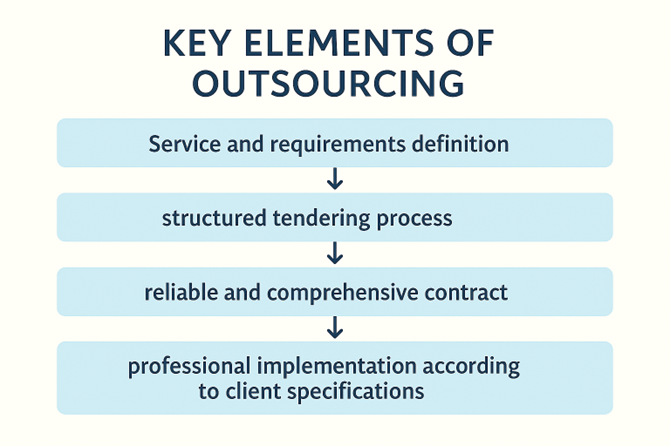
In this fundamental phase, we jointly question the goals and requirements for outsourcing. Is the organization truly ready to hand over processes to outsourcing? Are the interfaces between the service provider and the departments also defined in terms of processes? Are the questions and consequences of relocating abroad clear
and well thought out?

The more clarity there is in the tender itself, the better the quality of the offers. Comparability must be ensured.
The provider must know exactly what is expected: content, volume and timing, management requirements, as well as the level of digitization.
A decision-making basis that is audit-proof and based on objective evaluation.

Contents and framework conditions as part of the tender shorten negotiations. Proven contract templates provide security in the event of underperformance or other annoying but avoidable situations. Final and transparent price definitions based on actual operational information ensure cost efficiency. Contractual mechanisms ensure the quality of services. A clear representative model as the key to daily collaboration.

Tested implementation plans in the proposal phase accelerate the final rollout. Migration planning from in-house to outsourcing or between two service providers requires experience and sensitivity.
A vigilant eye throughout the process builds trust, ensures implementation, and avoids annoying rework. Intensive support in this phase prevents a short-term drop in customer satisfaction.

Customer satisfaction is key when outsourcing your customer service. But only those who measure it alongside process stability and cost efficiency gain a holistic view:
With forward-looking control tools, you identify risks early and ensure consistent quality—without being caught off guard by delays or misunderstandings.
